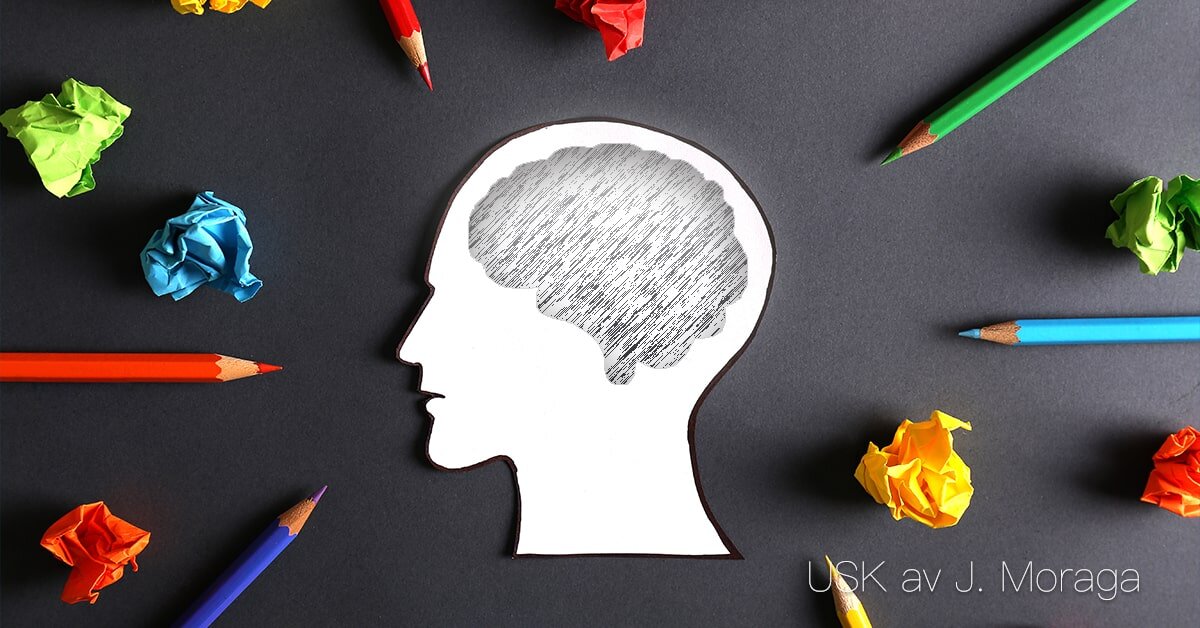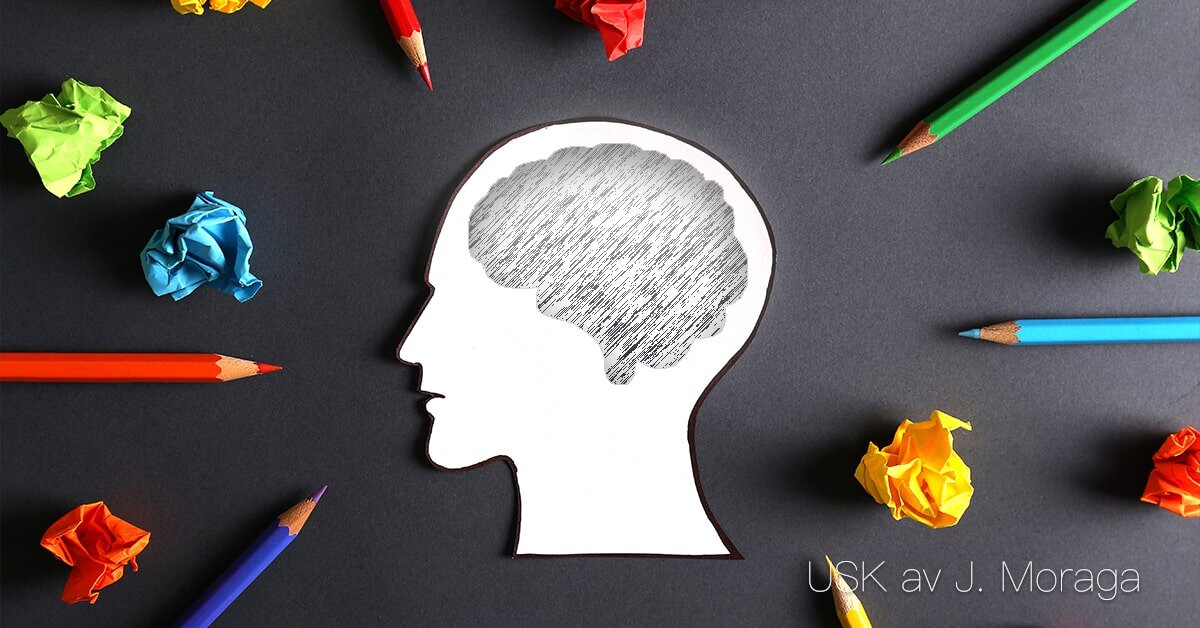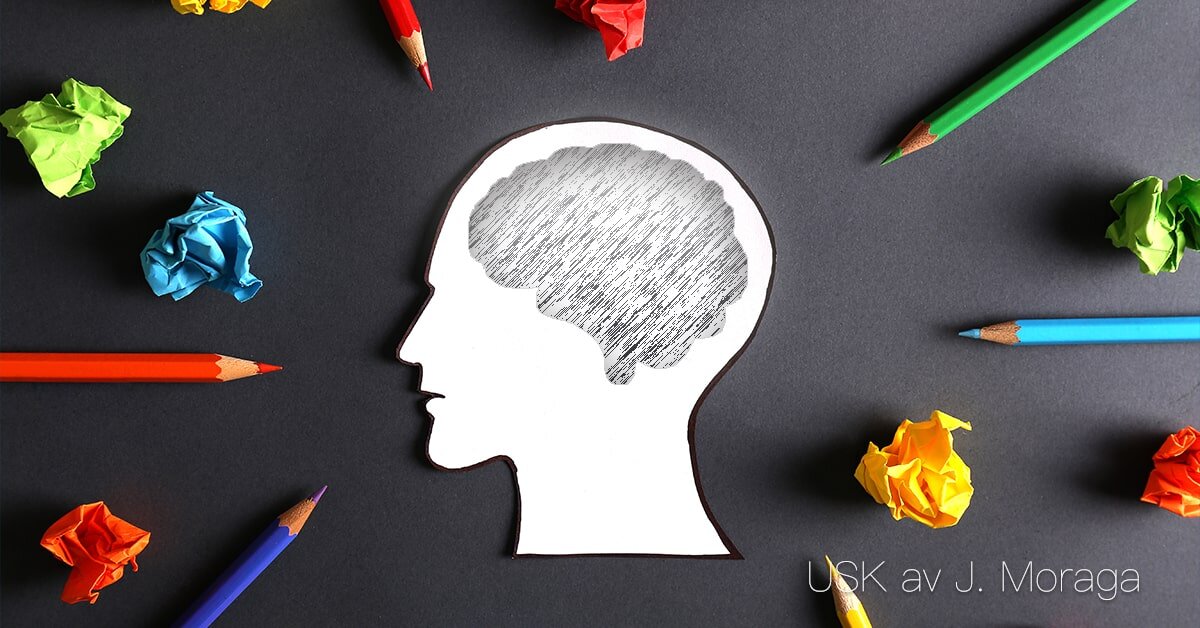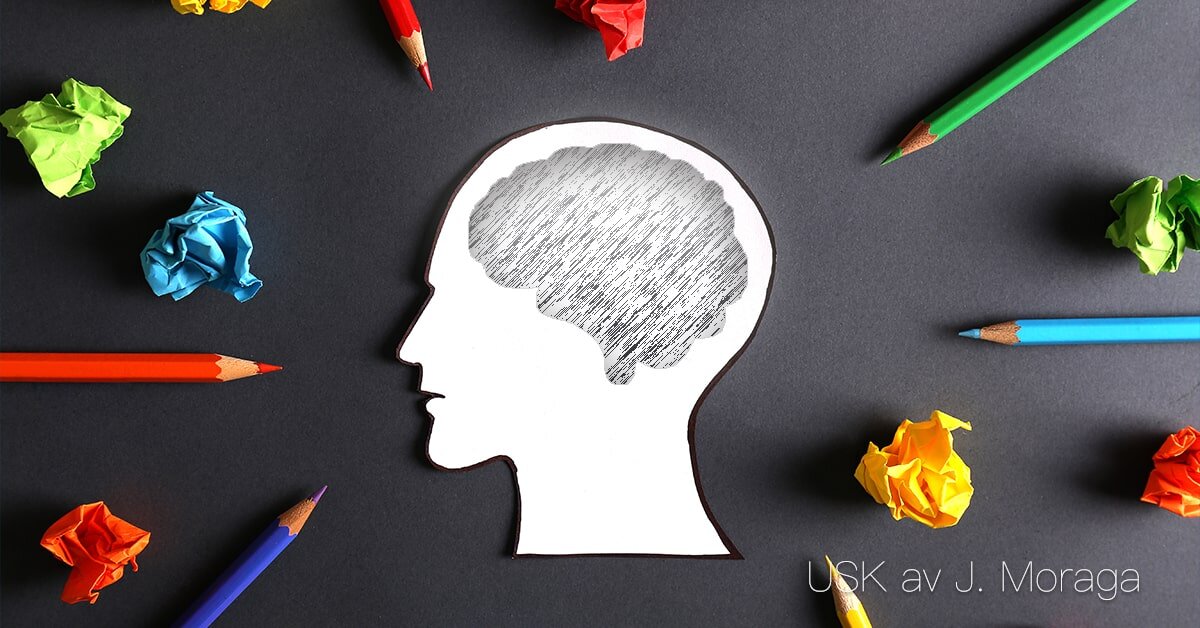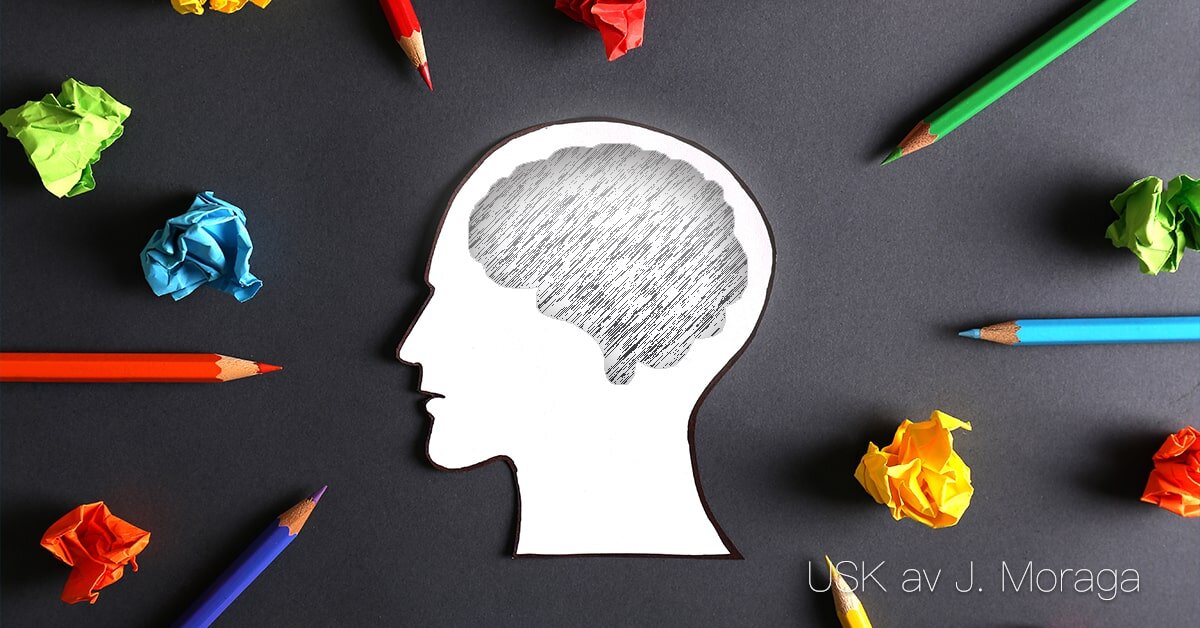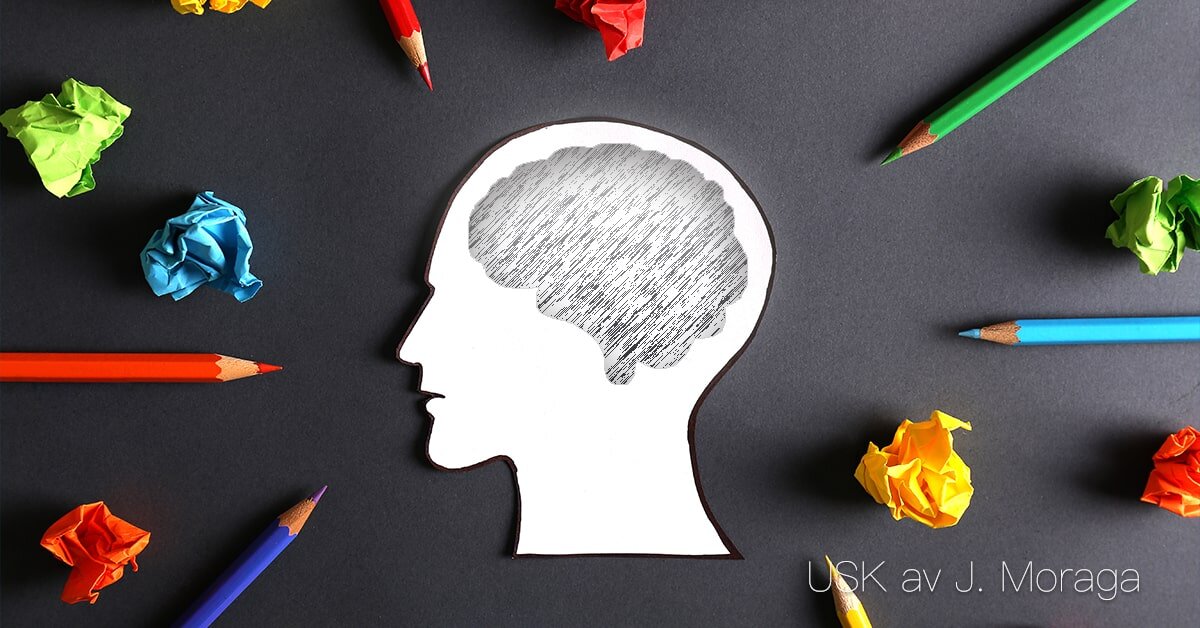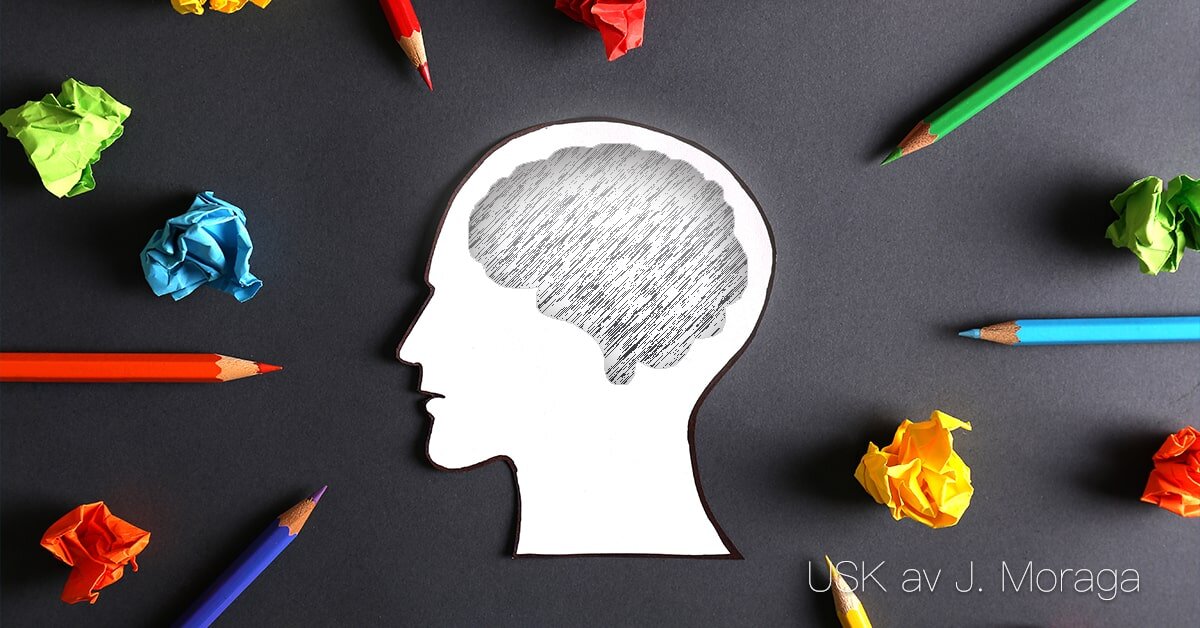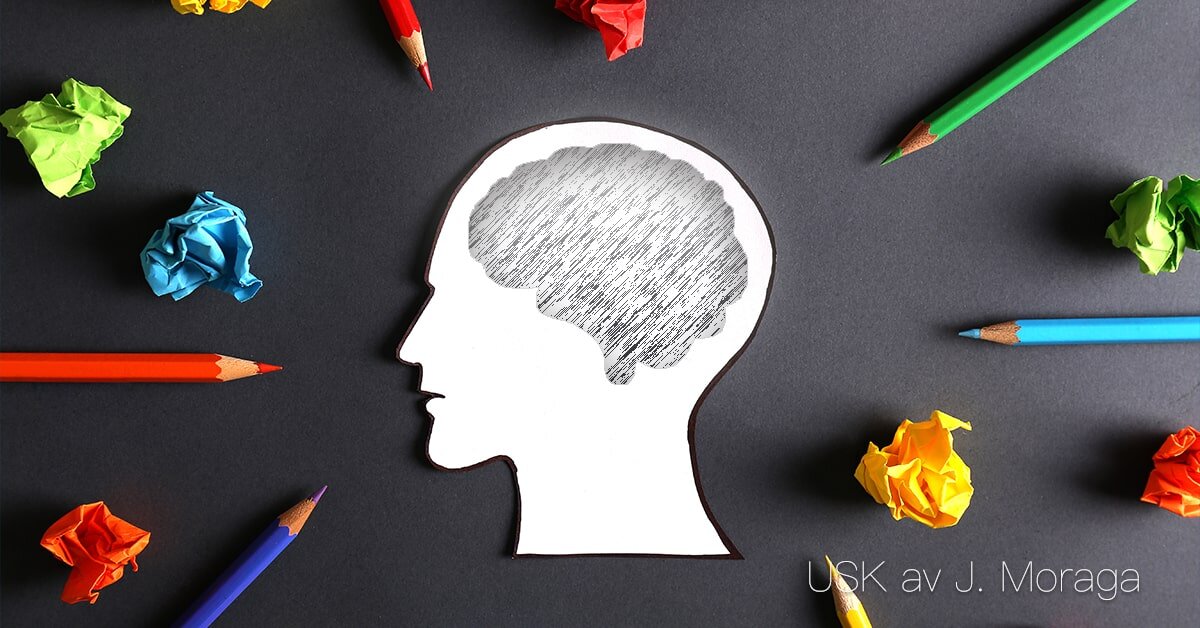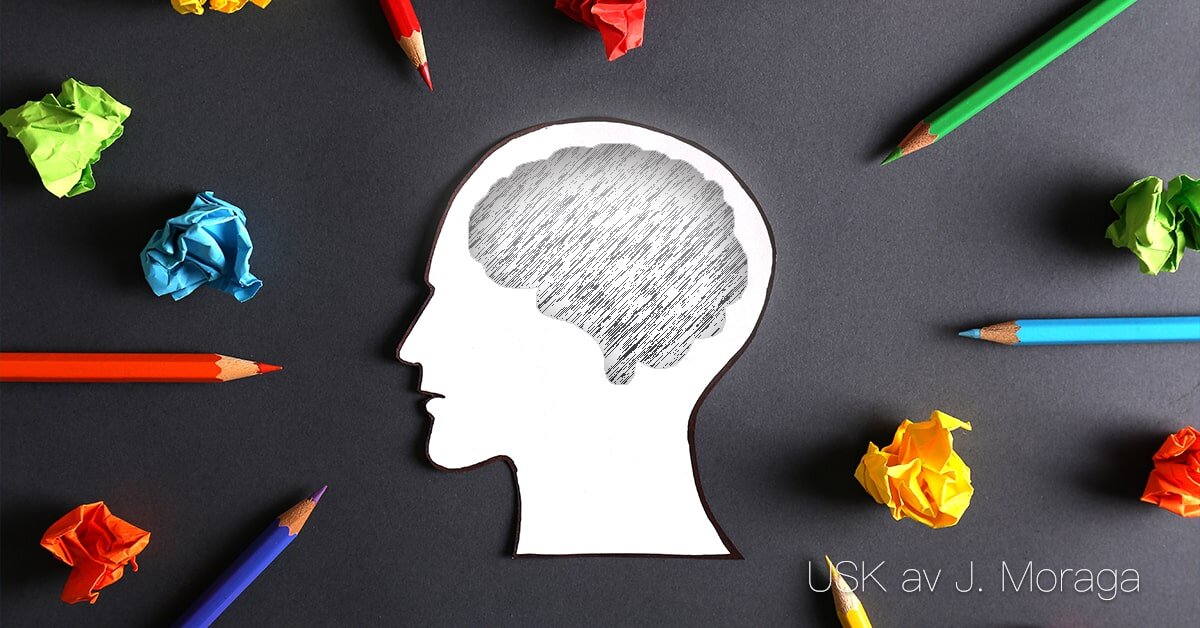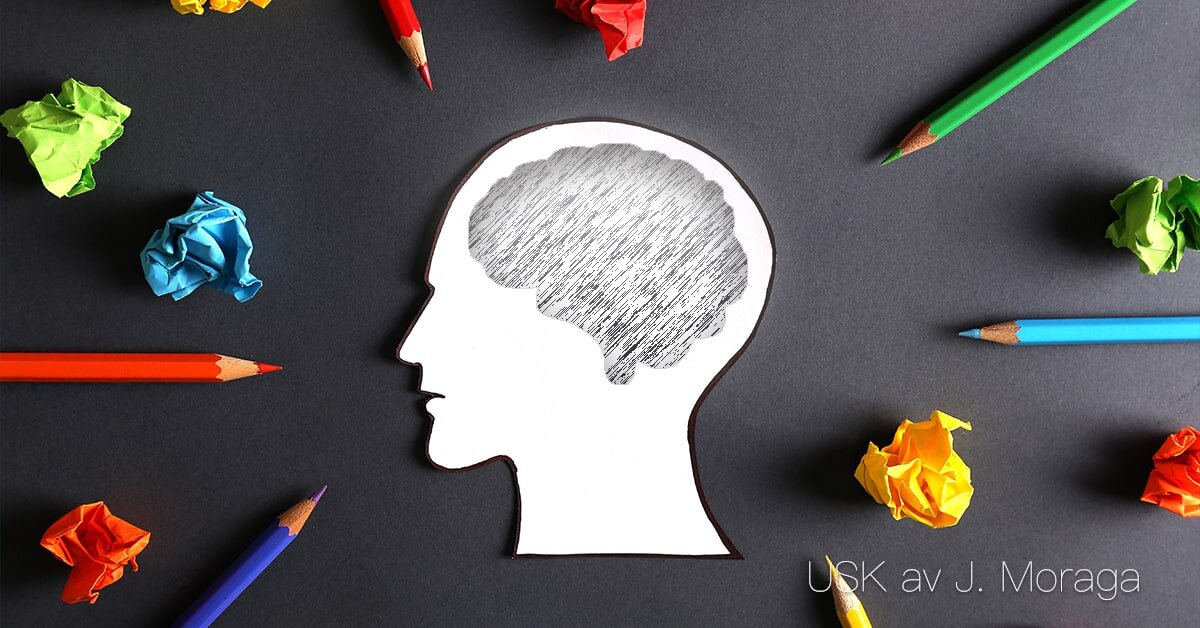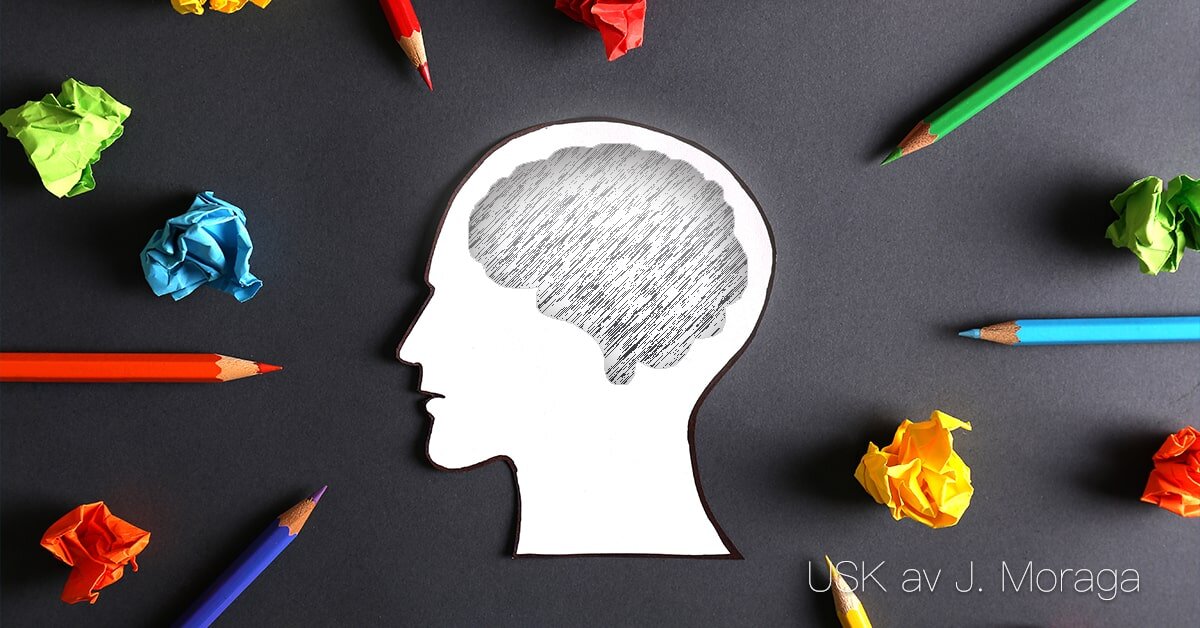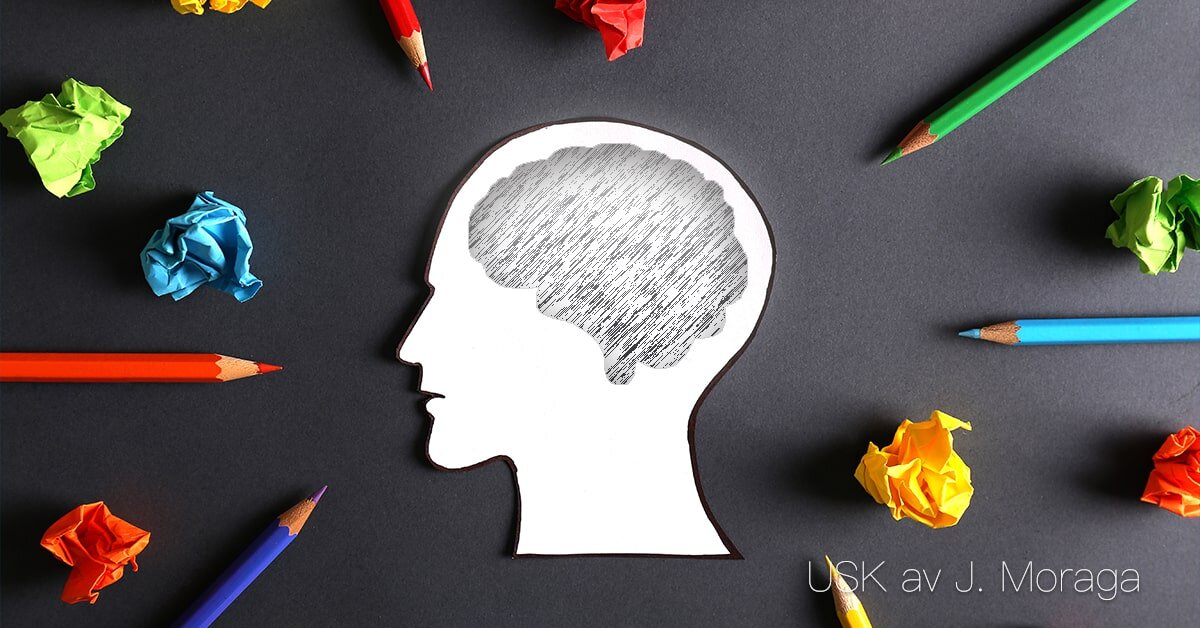
Everything posted by Julio Moraga
-
📄 Dokumentation och språkbruk
Dokumentation är ett avgörande moment i både vård- och omsorgsarbetet. Den gör det möjligt att följa hela processen – från bedömning till utvärdering – och säkerställer att insatserna är spårbara, rättssäkra och transparenta. I socialtjänsten styrs dokumentationen av Socialtjänstlagen (SoL) och i hälso- och sjukvården av Hälso- och sjukvårdslagen (HSL) samt Patientdatalagen (PDL). Skillnaden ligger främst i syftet: den sociala dokumentationen beskriver hur insatser enligt beslut har genomförts, medan journalföringen enligt HSL handlar om medicinska och omvårdnadsmässiga åtgärder. Ett vanligt verktyg i socialtjänsten är genomförandejournalen, där personalen löpande antecknar vad som gjorts, hur brukaren reagerat och om något avvikit från planen. Inom hälso- och sjukvården används i stället patientjournalen, där anteckningar görs enligt professionella riktlinjer och med fokus på medicinsk säkerhet. Språkbruket i dokumentationen är av stor betydelse. All information ska vara objektiv, saklig och respektfull. Det innebär att undvika värderande ord, spekulationer eller tolkningar av brukarens känslor. Istället beskrivs iakttagbara fakta: ”Anna deltog i gruppaktiviteten i 30 minuter och uttryckte trötthet efteråt” ger en tydlig och neutral bild, till skillnad från ”Anna verkade ointresserad”. Korrekt språkbruk bidrar inte bara till rättssäkerhet utan också till ett professionellt förtroende mellan personal, brukare och andra aktörer. God dokumentation är därför lika mycket en etisk fråga som en administrativ uppgift.
-
📄 Utvärdering av insatser
Utvärdering är den fas i omsorgs- och omvårdnadsprocessen som visar om insatserna haft önskad effekt. Den sker löpande under hela arbetets gång och innebär att följa upp hur individen mår, hur delmålen uppnås och om åtgärderna behöver förändras. En systematisk utvärdering kräver att personalen jämför brukarens aktuella situation med de mål som sattes vid planeringen. Det handlar inte enbart om att mäta resultat, utan också om att förstå varför något fungerat bra eller mindre bra. Brukarens egen upplevelse har stor betydelse – det är ofta först i samtal och observationer som förändringar märks tydligt. Undersköterskans roll är att observera, rapportera och dokumentera förändringar i brukarens tillstånd, beteende eller vardagsfunktion. Dessa observationer utgör underlag för annan personal, till exempel sjuksköterska eller biståndshandläggare, när beslut om fortsatta insatser ska tas. Om utvärderingen visar att målen inte uppnåtts behöver planen revideras. Det kan bero på att behoven förändrats, att insatserna inte varit tillräckliga eller att nya resurser krävs. På så sätt bildar processen en kontinuerlig cirkel där vård och omsorg ständigt utvecklas och förbättras. Utvärdering handlar alltså både om uppföljning och lärande – att dra slutsatser som stärker kvaliteten, individens delaktighet och verksamhetens utveckling över tid.
-
📄 Genomförande av insatser
Genomförandet är den fas där planerade åtgärder omsätts i praktiskt arbete. Det är här vård- och omsorgsinsatserna blir konkreta och påverkar brukarens vardag. Insatserna ska alltid utföras i enlighet med den upprättade planen och med respekt för brukarens integritet, självbestämmande och delaktighet. I socialtjänstens arbete innebär genomförandet ofta att personal stödjer brukaren i dagliga aktiviteter, sociala kontakter eller rehabiliterande insatser. Inom hälso- och sjukvården kan det handla om hjälp med medicinering, hygien, nutrition, fysisk aktivitet eller motiverande samtal. Oavsett insatsens art ska den alltid genomföras utifrån yrkesmässig kunskap, empati och etiska principer. För att genomförandet ska hålla hög kvalitet krävs god kommunikation inom arbetsgruppen och mellan olika yrkesprofessioner. Uppdrag och instruktioner från sjuksköterska, arbetsterapeut eller fysioterapeut ska följas noggrant. Undersköterskan behöver förstå syftet bakom åtgärden och kunna anpassa arbetet efter brukarens dagsform och förutsättningar. Allt som sker under genomförandet ska dokumenteras löpande. Det gäller både insatser som utförs enligt plan och eventuella avvikelser, till exempel om en aktivitet inte kunde genomföras eller om något oväntat inträffade. Dokumentationen ger underlag för den kommande utvärderingen och bidrar till rättssäkerhet och spårbarhet. Ett gott genomförande handlar inte bara om att göra det som står i planen, utan också om att skapa förtroende och delaktighet. Att lyssna, visa hänsyn och bekräfta brukarens upplevelser är en del av den professionella hållningen i allt praktiskt arbete.
-
📄 Planering av insatser
När behovet är bedömt formuleras en plan för vilka insatser som ska genomföras, hur de ska utföras och vem som ansvarar för vad. Planeringen är en central del av omsorgs- och omvårdnadsprocessen och bygger på samarbete mellan brukaren, personalen och ibland även anhöriga eller andra yrkesgrupper. En tydlig planering skapar förutsägbarhet, trygghet och kontinuitet. I socialtjänsten sker planeringen ofta genom en genomförandeplan, medan den i hälso- och sjukvården utformas som en vårdplan eller omvårdnadsplan. Planen ska alltid utgå från individens mål, resurser och behov, och formuleras på ett sätt som gör det möjligt att följa upp resultatet. I planeringsarbetet är det viktigt att använda ett professionellt språk och beskriva insatserna på ett konkret och mätbart sätt. Målen kan vara både kortsiktiga och långsiktiga, men de ska alltid vara realistiska och förankrade i brukarens egen vilja och förmåga. Ett exempel är att en person med psykisk ohälsa vill återfå struktur i vardagen. Då kan målet vara att personen deltar i daglig verksamhet tre gånger i veckan, med stöd av personal. Insatsen dokumenteras tydligt: vem som gör vad, när det ska ske och hur uppföljningen ska gå till. Planeringen är också ett tillfälle för samordning mellan olika aktörer. Om insatser ges av både socialtjänst och hälso- och sjukvård används en samordnad individuell plan (SIP) för att undvika glapp i ansvar och information. Planeringen är inte statisk – den ska kunna förändras när brukarens behov eller livssituation ändras. Därför måste den vara levande, tillgänglig och kontinuerligt följas upp genom dokumentation och utvärdering.
-
📄 Bedömning av behov
Bedömning av behov är det första steget i både omsorgs- och omvårdnadsprocessen och lägger grunden för hela den fortsatta planeringen. Syftet är att identifiera vilka resurser, svårigheter och önskemål en person har – utifrån både fysiska, psykiska, sociala och existentiella perspektiv. En bedömning utgår alltid från helhetssyn och genomförs i samarbete med individen själv. Observation, samtal och strukturerade kartläggningsverktyg används för att skapa en tydlig bild av situationen. I socialtjänstens arbete används ofta IBIC (Individens behov i centrum) som bygger på ICF-modellen (Internationell klassifikation av funktionstillstånd, funktionshinder och hälsa). Dessa modeller hjälper personalen att beskriva personens förmågor och hinder i vardagen på ett enhetligt sätt. I bedömningen ingår att ta hänsyn till faktorer som psykisk hälsa, funktionsförmåga, boendemiljö, relationer och ekonomi. Det är viktigt att lyssna in brukarens egna upplevelser och mål, eftersom delaktighet och självbestämmande är centrala principer inom vård och omsorg. Resultatet av bedömningen ligger till grund för planering av insatser, där mål och åtgärder formuleras utifrån den enskildes behov. Bedömningen behöver därför vara noggrant dokumenterad och tydlig, så att både personal och brukare kan förstå grunden för de beslut som fattas. En professionell bedömning kräver förmåga att tolka signaler, väga samman information och se samband mellan psykisk hälsa, livssituation och miljö. För undersköterskan innebär det att kunna observera, beskriva och rapportera förändringar på ett objektivt sätt.
-
📄 Omsorgsprocessen och omvårdnadsprocessen
Omsorgs- och omvårdnadsprocessen utgör grunden för allt professionellt arbete inom vård och omsorg. Syftet är att ge ett systematiskt arbetssätt där den enskildes behov identifieras, åtgärder planeras, genomförs, utvärderas och dokumenteras. Genom att följa dessa steg säkerställs kvalitet, rättssäkerhet och kontinuitet i insatserna. Bedömning av behov innebär att observera, samtala och kartlägga vilka svårigheter, resurser och önskemål individen har. I detta skede används ofta strukturerade modeller såsom ICF (Internationell klassifikation av funktionstillstånd, funktionshinder och hälsa) eller IBIC (Individens behov i centrum) för att skapa en helhetsbild av livssituationen. Planering handlar om att tillsammans med brukaren formulera mål och bestämma vilka åtgärder som ska genomföras för att förbättra eller bevara hälsa och funktion. I planeringen tydliggörs ansvarsfördelning mellan personal, andra yrkesgrupper och den enskilde. Genomförande innebär att planerade åtgärder omsätts i praktiskt arbete. Det kan handla om allt från stöd i dagliga aktiviteter till motiverande samtal eller hjälp vid medicinering. Genomförandet ska alltid ske med respekt för brukarens integritet, självbestämmande och delaktighet. Utvärdering är en central del av processen och innebär att följa upp hur väl insatserna har fungerat och om målen uppnåtts. Om inte, behöver planen justeras. Utvärdering sker löpande och bör bygga på både personalens observationer och brukarens egen upplevelse. Dokumentation avslutar varje fas men pågår även kontinuerligt under hela processen. Den ska vara saklig, tydlig och följa gällande lagstiftning, såsom Socialtjänstlagen (SoL), Hälso- och sjukvårdslagen (HSL) och Patientdatalagen. Genom korrekt dokumentation blir det möjligt att följa vård- och omsorgsinsatser över tid och säkerställa att individens behov tillgodoses. Omsorgsprocessen används främst inom socialtjänsten, medan omvårdnadsprocessen är mer knuten till hälso- och sjukvården. Båda följer dock samma logik: ett cykliskt förlopp där insatserna kontinuerligt anpassas efter individens aktuella behov.
-
📄 Ohälsa och könstillhörighet
Könstillhörighet påverkar både hur människor uppfattar sig själva och hur de bemöts i samhället. Normer kring kön och identitet formas tidigt och styr ofta hur flickor, pojkar, kvinnor och män förväntas tänka, klä sig och agera. Dessa normer kan skapa trygghet och tillhörighet, men de kan också begränsa, särskilt för dem som inte känner igen sig i de traditionella könsrollerna. Cisnormen – föreställningen om att alla är och ska vara överens om sitt biologiska kön och könsidentitet – genomsyrar mycket av det sociala livet. Personer vars identitet stämmer överens med det kön de tilldelades vid födseln kallas cispersoner. De som inte identifierar sig med det könet kan beskrivas som transpersoner. Bland dessa finns binära transpersoner, som identifierar sig som det motsatta könet, och ickebinära personer, som inte identifierar sig som vare sig man eller kvinna. Forskning visar att transpersoner i Sverige i genomsnitt upplever sämre psykisk hälsa än cispersoner. Många beskriver symtom på ångest, depression och självskadebeteende, och ickebinära personer rapporterar ofta den högsta nivån av psykisk påfrestning. Diskriminering, osynliggörande och brist på förståelse i vården bidrar till ökad psykisk sårbarhet. Att leva i ett samhälle där ens identitet inte accepteras kan leda till minskad självkänsla, oro och nedstämdhet. Fördomar och negativa attityder grundas ofta i okunskap eller rädsla inför det som upplevs som normbrytande. Därför har vårdpersonal, särskilt undersköterskor som möter människor i vardagen, en viktig roll i att skapa trygghet, respekt och bekräftelse. 📊 Fakta: Källa: Folkhälsomyndigheten, ”Transpersoners hälsa i Sverige”, 2024; Socialstyrelsen, ”Psykisk ohälsa och könsidentitet”, 2023.
-
📄 Faktorer som påverkar äldre
Äldres psykiska hälsa påverkas i hög grad av den sociala gemenskapen och möjligheten att känna sig delaktig i samhället. Att uppleva trygghet, ha någon att umgås med och kunna påverka sin vardag är avgörande för psykiskt välbefinnande. Många äldre beskriver en oro för att bli ensamma eller uppleva att de inte längre behövs – något som kan bidra till nedstämdhet eller depression. Viktiga faktorer för ett gott psykiskt mående är goda och hälsosamma matvanor, meningsfullhet i vardagen samt fysisk och mental träning. Rörelse stimulerar både hjärna och kropp, förbättrar sömn, stärker minnet och minskar risken för depression. Ekonomiska svårigheter, förlust av partner eller att inte kunna bo kvar hemma kan däremot skapa oro och känslor av förlust. Isolering är en av de största riskfaktorerna för psykisk ohälsa bland äldre. När det sociala nätverket krymper och kontakten med omvärlden minskar, ökar risken för ensamhet och passivitet. Psykiatriska diagnoser som depression och ångest är vanliga i denna åldersgrupp, men symtomen kan ibland misstas för demens eller kroppslig sjukdom. Flera av dessa faktorer kan påverkas genom medvetna insatser. Hälsofrämjande aktiviteter, som seniorträning och promenadgrupper, stärker både fysisk och psykisk hälsa. Social delaktighet, exempelvis genom gemensamma måltider, samtalsgrupper eller digitala mötesformer, minskar känslan av isolering. Utbildning i digital teknik kan underlätta kontakt med familj och vänner och därmed bidra till ökat välbefinnande. 📊 Fakta: Källa: Folkhälsomyndigheten, ”Statistik om psykisk hälsa bland äldre”, 2024; Socialstyrelsen, ”Äldres psykiska hälsa”, 2023; Nationellt kompetenscentrum Anhöriga (NKA), 2023.
-
📄 Faktorer som påverkar vuxna
Hos vuxna formas den psykiska hälsan i mötet mellan personliga förutsättningar och livets krav. Arbetsliv, familj, sociala relationer och ekonomiska villkor har särskilt stor betydelse. När dessa faktorer inte är i balans ökar risken för psykisk ohälsa, särskilt om individen saknar strategier för att hantera stress eller motgångar. I arbetslivet påverkas det psykiska välbefinnandet av krav, kontroll och stöd. Psykiskt ansträngande arbete, hög arbetsbelastning eller låg grad av egenkontroll kan leda till trötthet och utmattning. Motsatsen gäller också: delaktighet, tydliga mål och tillit mellan kollegor främjar psykisk hälsa. Psykiatriska diagnoser, långvarig sjukskrivning eller arbetslöshet kan skapa känslor av utanförskap och minska tilltron till den egna förmågan. Långvarig sysslolöshet eller understimulering bidrar ofta till en upplevelse av meningslöshet. Även upplevelser av orättvisa, brist på erkännande och mobbning på arbetsplatsen påverkar den psykiska hälsan negativt. För att främja välbefinnandet behöver vuxna uppleva att tillvaron är begriplig, hanterbar och meningsfull – en princip som ofta beskrivs genom begreppet KASAM (känsla av sammanhang). Stöd från arbetsledning, möjlighet till återhämtning och att känna sig behövd är centrala friskfaktorer. När människor ges möjlighet att känna delaktighet, ansvar och uppskattning stärks självkänslan och förmågan att hantera livets krav. Ett samhälle som aktivt motverkar arbetslöshet och isolering bidrar till att minska psykisk ohälsa bland vuxna. 📊 Fakta: Källa: Folkhälsomyndigheten, ”Statistik om psykisk hälsa bland vuxna”, 2024; Arbetsmiljöverket, ”Arbetsmiljön 2023”.
-
📄 Faktorer som påverkar barn och ungdomar
Barn och ungas psykiska hälsa påverkas av en kombination av biologiska, psykologiska och sociala faktorer. Det handlar om hur väl barnet trivs i sin vardag, känner sig trygg i sina relationer och får möjlighet att lyckas i skolan och i livet. Höga prestationskrav i skolan är i dag en av de främsta orsakerna till stress bland unga. Krav på resultat, betyg och framtidsval kan skapa oro, särskilt om eleven saknar tillräckligt stöd. Mobbning, både i skolan och på nätet, är fortsatt ett stort problem och påverkar självkänsla och tillit. Ungdomsarbetslöshet och ekonomisk osäkerhet gör övergången till vuxenlivet svårare. Brist på sysselsättning kan leda till känslor av utanförskap och minska motivationen att delta i samhällslivet. Samtidigt är social gemenskap och känslan av tillhörighet en viktig skyddsfaktor. Vänner, familj och fritidsaktiviteter bidrar till trygghet och struktur. En sund självkänsla växer fram genom att barnet upplever sig betydelsefullt, får uppskattning och tillåts göra misstag. För många unga blir könsidentiteten en del av denna utveckling. Att mötas med respekt och förståelse stärker det psykiska välbefinnandet. Skolan och hemmet har tillsammans ett stort ansvar för att erbjuda stimulans, utmaning och stöd i rätt balans. Möjligheter till vila, meningsfull fritid och närvaro av engagerade vuxna är avgörande för att unga ska må bra och känna framtidstro. 📊 Fakta: Källa: Folkhälsomyndigheten, ”Statistik om psykisk hälsa bland unga”, 2024; Skolverket, ”Elevers psykiska hälsa i skolan”, 2023; Arbetsmiljöverket, ”Unga i arbetslivet”, 2023.
-
📄 Psykosociala hälsorisker
Psykosociala hälsorisker Den psykosociala hälsan påverkas av många faktorer i människans vardag. Förändringar i samhället, arbetslivet och den tekniska utvecklingen har gjort att gränserna mellan arbete, fritid och vila blivit otydligare. I dag lever många med ett ständigt informationsflöde och en uppkopplad livsstil som gör det svårt att koppla av. Digitala verktyg och sociala medier kan bidra till gemenskap och stöd, men också skapa press och jämförelse. Många unga upplever att de ständigt behöver vara tillgängliga, vilket leder till sömnbrist och stress. Den digitala miljön kan också förstärka känslor av utanförskap, särskilt hos personer med låg självkänsla eller begränsade sociala nätverk. Andra riskfaktorer är hög arbetsbelastning, otrygga anställningar och bristande balans mellan krav och återhämtning. Ekonomiska svårigheter och ensamhet kan på sikt leda till psykisk ohälsa. Samtidigt påverkas många av ständiga krav på prestation – i arbete, studier och privatliv. För att motverka psykosociala hälsorisker behöver både individen och samhället bidra till bättre återhämtningsmöjligheter och social trygghet. Arbetsplatser som erbjuder stöd, tydliga strukturer och inflytande minskar risken för stressrelaterade sjukdomar. Även utbildning om hälsosam digital användning, sömn och fysisk aktivitet har visat sig vara viktiga skyddsfaktorer. 📊 Fakta: Källa: Folkhälsomyndigheten, ”Statistik om psykisk hälsa”, 2024; Arbetsmiljöverket, ”Arbetsmiljön 2023”.
-
📄 Kartläggning gjord av Folkhälsomyndigheten (2023–2024)
Kartläggning gjord av Folkhälsomyndigheten (2023–2024) Folkhälsomyndigheten genomför regelbundet nationella kartläggningar för att följa utvecklingen av psykisk hälsa och ohälsa i Sverige. Syftet är att identifiera trender, riskgrupper och bakomliggande faktorer som påverkar befolkningens psykiska välbefinnande. Undersökningarna omfattar både självskattade upplevelser av välbefinnande och olika former av psykiska besvär. Resultaten visar tydliga skillnader mellan åldersgrupper, kön och socioekonomiska förhållanden. Yngre kvinnor rapporterar i högre grad stress, ångest och sömnsvårigheter, medan äldre personer oftare beskriver ensamhet och nedstämdhet. Personer med ekonomisk utsatthet, arbetslöshet eller osäkra boendeförhållanden har en ökad risk för psykisk ohälsa. Den senaste sammanställningen visar också att psykiskt välbefinnande har minskat något bland unga vuxna under det senaste decenniet. Samtidigt upplever majoriteten av befolkningen fortfarande en god psykisk hälsa. Kartläggningen används som grund för nationella insatser inom vård, skola och socialt arbete, med målet att minska ojämlikheter och stärka befolkningens psykiska välbefinnande. 📊 Fakta: Källa: Folkhälsomyndigheten, ”Statistik om psykisk hälsa”, 2024; Folkhälsorapporten 2023.
-
📄 Vad är psykiskt välbefinnande och nedsatt välbefinnande?
Psykiskt välbefinnande kan beskrivas som ett tillstånd där individen känner balans, upplever mening och har förmåga att hantera livets krav. Det handlar om att kunna fungera i vardagen, känna samhörighet med andra och uppleva glädje och motivation. Psykiskt välbefinnande innefattar både positiva känslor och förmågan att återhämta sig efter motgångar. Nedsatt psykiskt välbefinnande innebär att dessa funktioner delvis är påverkade. Personen kan känna oro, nedstämdhet, utmattning eller en minskad förmåga att känna tillfredsställelse i livet, men utan att det nödvändigtvis rör sig om en psykisk sjukdom. Många människor upplever perioder av nedsatt välbefinnande som en reaktion på stress, förluster eller svåra livssituationer. Forskningen skiljer i dag mellan psykisk ohälsa och psykiskt välbefinnande som två dimensioner som kan existera samtidigt. En person kan ha vissa symtom men ändå uppleva livskvalitet och mening. Denna förståelse betonar vikten av att inte enbart behandla sjukdom utan också att främja hälsa och välbefinnande. Enligt Folkhälsomyndigheten uppger majoriteten av Sveriges vuxna befolkning ett gott psykiskt välbefinnande, men andelen unga med nedsatt psykiskt välbefinnande har ökat under de senaste tio åren. 📊 Fakta: Källa: Folkhälsomyndigheten, ”Statistik om psykisk hälsa”, 2024; Centrum för epidemiologi och samhällsmedicin, ”Psykisk ohälsa och psykiskt välbefinnande i befolkningen”, 2023.
-
Vilka är de vanligaste typer av matens konsistens?
📄 Vilka är de vanligaste typer av matens konsistens? Mat kan serveras med olika konsistens beroende på individens behov. Syftet är att underlätta ätande och sväljning, men också att bibehålla aptiten och matglädjen. Hel eller delad konsistens används när vårdtagaren kan tugga och svälja normalt. Maten kan delas upp på tallriken och rikligt med sås gör det lättare vid muntorrhet. Puré ges vid lättare ät- och sväljsvårigheter, motorisk nedsättning eller orkeslöshet. Konsistensen är mjuk och grovkornig, lätt att mosa och serveras med extra sås. Timbalkost används vid svårare sväljsvårigheter, exempelvis förträngningar i matstrupen. Den är mjuk, slät och geléliknande, lätt att svälja och håller ihop på tallriken. Gelékost är lämplig vid mycket svåra sväljsvårigheter, skadad munhåla eller nedsatt sväljreflex. Den är hal, mjuk och smälter i munnen, vilket minskar risken för att sätta i halsen. Flytande kost passar vid förträngningar, skador eller långsamma passager i svalg, matstrupe eller mage. Den består av släta soppor och kompletteras ofta med näringsdryck. Tjockflytande kost är ett alternativ för personer som upplever svårigheter med tunnare vätskor. Den är slät och trögflytande, ungefär som gräddfil, och upplevs ofta som lättare att svälja. 📊 Fakta: Anpassning av kostens konsistens är en central åtgärd för personer med dysfagi. Det minskar risken för lunginflammation orsakad av felsväljningar och bidrar till att förebygga undernäring. Källa: Socialstyrelsen, ”Nutrition för äldre i vård och omsorg”, 2020
-
Vad är viktigt att tänka på vid matning av vårdtagare?
📄 Vad är viktigt att tänka på vid matning av vårdtagare? Matning är mer än att få i en person näring – det är också en situation där värdighet, trygghet och delaktighet ska bevaras. Den som matas är ofta i en utsatt position, och personalens förhållningssätt påverkar hela upplevelsen. Det är viktigt att vårdtagaren sitter upprätt och bekvämt, så att sväljningen underlättas och risken för felsväljningar minskar. Tempot bör anpassas efter individen, och små portioner ges åt gången. Att beskriva vad som serveras och låta vårdtagaren vara delaktig i tempot eller att säga ja eller nej är en del av respekten. Miljön har också betydelse. En lugn och ostörd måltidssituation gör det lättare att fokusera på ätandet. Måltiden kan bli en stund av samvaro snarare än ett stressmoment, vilket ökar aptiten och skapar trygghet. 📊 Fakta: Forskning visar att stöd vid måltider som sker i en lugn miljö och med respekt för vårdtagarens självbestämmande leder till både bättre näringsintag och ökad livskvalitet. Källa: Socialstyrelsen, ”Nutrition för äldre i vård och omsorg”, 2020.
-
Vad är syftet med kosttillägg och berikningsprodukter?
📄 Vad är syftet med kosttillägg och berikningsprodukter? Kosttillägg och berikningsprodukter används när den vanliga kosten inte räcker för att täcka kroppens behov. Många vårdtagare, särskilt äldre eller sjuka, kan ha svårt att äta tillräckliga mängder mat på grund av nedsatt aptit, svårigheter att tugga eller svälja, eller ökad energiförbrukning vid sjukdom. Då blir kosttillägg ett sätt att säkerställa att kroppen ändå får i sig det den behöver. Kosttillägg kan vara näringsdrycker, pulver eller puddingar som innehåller energi, protein, vitaminer och mineraler i koncentrerad form. Berikningsprodukter handlar mer om att förstärka den vanliga maten, till exempel genom att tillsätta grädde, mjölkpulver, ägg eller olja för att öka energi- och proteininnehållet. Det huvudsakliga syftet är att förebygga eller behandla undernäring. När vårdtagaren får rätt energi och näring förbättras sårläkning, motståndskraft mot infektioner och möjligheten att orka med vardagen. 📊 Fakta: Undernäring förekommer hos cirka 20–30 % av alla äldre i vård och omsorg. Kosttillägg och berikning är bevisat effektiva åtgärder för att minska viktnedgång och förbättra återhämtning. Källa: Socialstyrelsen, ”Näringsriktlinjer i vård och omsorg”, 2020.
-
Vilka enkla råd ges för anpassning av matens konsistens och för att underlätta sväljning?
📄 Vilka enkla råd ges för anpassning av matens konsistens och för att underlätta sväljning? När en person har sväljsvårigheter är det ofta de små förändringarna som gör den stora skillnaden. Att anpassa konsistensen på maten kan innebära att servera timbalkost, mosad eller passerad mat som är lättare att föra bak i munnen och svälja utan att fastna. Även drycker kan behöva förtjockas så att de inte ”rinner fel”. Sittställningen är en annan viktig del. En vårdtagare som sitter upprätt, med huvudet lätt framåtböjt, har bättre förutsättningar att svälja på ett säkert sätt. Att låta måltiden ta tid och uppmuntra små tuggor och små klunkar gör också skillnad. Det handlar inte bara om säkerhet, utan också om att bevara matglädjen. Även konsistensanpassad mat kan serveras på ett aptitligt sätt, med tydliga färger och dofter, så att måltiden blir både trygg och lustfylld. 📊 Fakta: Studier visar att rätt anpassning av kost och dryck kan minska risken för lunginflammation orsakad av felsväljningar. Källa: Socialstyrelsen, ”Nutrition för äldre i vård och omsorg”, 2020.
-
Vad innebär en utredning av dysfagi?
📄 Vad innebär en utredning av dysfagi? En utredning av dysfagi handlar om att förstå varför en person har sväljsvårigheter och hur dessa påverkar vardagen. Det är ofta ett tvärprofessionellt arbete där både logoped, dietist, läkare och vårdpersonal kan vara delaktiga. Utredningen börjar ofta med samtal och observationer under måltid: tar det lång tid att äta, hostar personen ofta, samlas maten i kinderna eller blir rösten hes efter sväljning? Sådana iakttagelser ger viktiga ledtrådar. I nästa steg kan mer strukturerade tester användas, till exempel sväljprov där konsistensen på maten anpassas för att se vad som fungerar bäst. I vissa fall görs också röntgen eller endoskopiska undersökningar för att följa hur sväljningen går till inne i kroppen. Syftet med utredningen är alltid att skapa en bild av vilka risker som finns – inte minst risken att mat hamnar i luftstrupen – och att ge underlag för hur kosten kan anpassas på ett tryggt och värdigt sätt. 📊 Fakta: Dysfagi är vanligt hos äldre och personer med neurologiska sjukdomar. Utredning och anpassning av kosten minskar risken för undernäring och lunginflammation. Källa: Socialstyrelsen, ”Nationella riktlinjer för vård vid stroke”, 2022.
-
Vad är syftet med olika kosttyper?
📄 Vad är syftet med olika kosttyper? Olika kosttyper används för att anpassa maten efter individens behov av energi, näringsämnen och konsistens. Syftet är att säkerställa ett tillräckligt näringsintag och att förebygga undernäring eller andra hälsoproblem. En energirik kost kan behövas för personer som har svårt att äta tillräckligt stora portioner, medan en proteinrik kost är viktig vid sjukdomar eller tillstånd som bryter ner muskelmassa. För personer med diabetes används en kost som håller blodsockret stabilt, och vid celiaki krävs glutenfri kost för att undvika skador på tarmen. Även konsistensanpassad mat, till exempel timbalkost eller flytande kost, kan räknas som särskilda kosttyper och är avgörande för personer med svårigheter att tugga eller svälja. På detta sätt kan maten bli både säker och näringsriktig, oavsett sjukdom eller funktionsnedsättning. 📊 Fakta: Socialstyrelsen framhåller att rätt kosttyp är en del av behandlingen vid många sjukdomar. Anpassad kost kan minska komplikationer och förbättra återhämtning. Källa: Bokens-K7; Socialstyrelsen, ”Näringsriktlinjer i vård och omsorg”, 2020.
-
Vad är skillnaden mellan normalkost och specialkost?
📄 Vad är skillnaden mellan normalkost och specialkost? Normalkost är en balanserad kost som täcker de flesta människors näringsbehov. Den ska ge tillräckligt med energi, protein, vitaminer och mineraler för att upprätthålla hälsa och förebygga sjukdom. Normalkost används för friska personer utan särskilda behov och följer allmänna rekommendationer som exempelvis tallriksmodellen. Specialkost ges däremot när normalkosten inte räcker till eller måste anpassas på grund av sjukdom, allergi, intolerans eller särskilda medicinska behov. Det kan vara glutenfri kost vid celiaki, laktosfri kost vid laktosintolerans eller energiberikad kost för undernärda. Specialkost används också vid tillstånd som diabetes, där blodsockret behöver hållas stabilt. Ett konkret exempel är en vårdtagare på äldreboende: vissa kan äta normalkost, medan andra behöver konsistensanpassad eller näringsberikad mat för att klara sitt dagliga behov. 📊 Fakta: Enligt Socialstyrelsen är undernäring vanligt bland äldre i vård och omsorg. Därför ordineras ofta specialkost i form av berikad eller konsistensanpassad mat. Källa: Bokens-K7; Socialstyrelsen, ”Näringsriktlinjer i vård och omsorg”, 2020.
-
Vad kan hudturgor ge för information kring vätska hos en vårdtagare?
📄 Vad kan hudturgor ge för information kring vätska hos en vårdtagare? Hudturgor betyder hudens spänst och används som en enkel klinisk observation för att bedöma vätskestatus. När huden nyps upp mellan två fingrar ska den snabbt återgå till sitt normala läge. Om huden däremot blir kvarstående i ett veck tyder det på nedsatt vätskemängd i kroppen, alltså uttorkning. Hos yngre personer är testet ofta tillförlitligt, men hos äldre kan resultatet vara svårare att tolka eftersom huden naturligt förlorar elasticitet med åldern. Det gör att andra observationer – som slemhinnornas fuktighet, urinmängd och allmäntillstånd – alltid bör vägas in. Ett exempel kan vara en äldre vårdtagare som plötsligt blir yr och svag. Hudturgor kan ge en ledtråd om vätskebrist, men observationen måste kombineras med helhetsbedömning och eventuell provtagning. 📊 Fakta: Hudturgor är ett av de äldsta och enklaste sätten att observera uttorkning, men är osäkrare hos äldre och vid vissa hudsjukdomar. Källa: Bokens-K7; 1177 Vårdguiden, ”Vätskebrist”, 2023.
-
Vilka symtom är olika för uttorkning och övervätskning?
📄 Vilka symtom är olika för uttorkning och övervätskning? Även om uttorkning och övervätskning har vissa gemensamma drag, finns det också tydliga skillnader som vård- och omsorgspersonal behöver kunna urskilja. Vid uttorkning blir urinen ofta mörk och sparsam, huden kan kännas torr och insjunken, och blodtrycket sjunker. Den som är uttorkad kan uppvisa snabba hjärtslag och en känsla av törst. I svåra fall kan cirkulationskollaps uppstå. Vid övervätskning är symtomen snarare motsatta. Urinmängden kan vara ökad eller, vid svår hjärtsvikt och njurpåverkan, paradoxalt minska. Huden kan bli svullen, särskilt kring ben och fötter, och andningen påverkad genom vätska i lungorna, vilket yttrar sig som andfåddhet och hosta. Viktuppgång under kort tid kan också vara en tydlig signal. Ett praktiskt exempel är en vårdtagare med hjärtsvikt som på några dagar går upp flera kilo i vikt och samtidigt får svullna ben och andfåddhet. Detta skiljer sig markant från en person med vätskebrist som istället blir torr i munnen, orkeslös och yr vid uppresning. 📊 Fakta: Uttorkning är vanligast hos äldre personer på grund av minskad törstkänsla, medan övervätskning ofta uppstår vid hjärt- eller njursjukdomar. Källa: Bokens-K7; Socialstyrelsen, ”Nutrition för äldre i vård och omsorg”, 2020.
-
Vilka symtom är gemensamma för uttorkning och övervätskning?
📄 Vilka symtom är gemensamma för uttorkning och övervätskning? Att hålla balansen i kroppens vätskenivåer är avgörande för hälsan. Både uttorkning (dehydrering) och övervätskning (hyperhydrering) kan ge liknande symtom, vilket gör det viktigt för vård- och omsorgspersonal att observera förändringar noggrant. Ett vanligt gemensamt tecken är trötthet – kroppen orkar inte som den brukar när vätskebalansen rubbas. Även förvirring eller nedsatt medvetandegrad kan förekomma, särskilt hos äldre där små förändringar i vätskestatus kan få stor effekt. Huvudvärk, yrsel och illamående kan också ses vid båda tillstånden. Ett exempel kan vara en äldre vårdtagare på ett särskilt boende som plötsligt blir mer stillsam och svår att få kontakt med. Här måste personalen överväga om symtomen kan bero på för lite eller för mycket vätska, och därför behövs en helhetsbedömning. 📊 Fakta: Vätskebalansen regleras normalt av njurar, hormoner och törstcentrum i hjärnan. Hos äldre är dessa funktioner ofta nedsatta, vilket gör att både uttorkning och övervätskning förekommer relativt ofta. Källa: Bokens-K7; Socialstyrelsen, ”Nutrition för äldre i vård och omsorg”, 2020.
-
Vilka yttre faktorer kan påverka hur vård- och omsorgspersonal når fram till en vårdtagare?
📄 Vilka yttre faktorer kan påverka hur vård- och omsorgspersonal når fram till en vårdtagare? Yttre faktorer kan ha stor betydelse för samspelet mellan personal och vårdtagare. Miljön där mötet sker är en central del. Buller, trängsel eller dålig belysning kan göra det svårare att förstå och koncentrera sig, medan en lugn och trygg omgivning underlättar kommunikationen. Tiden är en annan faktor. Om samtal eller åtgärder sker under stress eller när vårdtagaren är trött, kan det minska möjligheten att ta till sig information. Likaså kan hjälpmedel, teknik och tillgång till anpassade resurser påverka hur väl personalen når fram. Även sociala och kulturella sammanhang kan fungera som yttre faktorer. Skillnader i språk, traditioner eller tidigare erfarenheter av vård kan påverka hur insatser tas emot. Genom att uppmärksamma dessa faktorer kan personalen skapa bättre förutsättningar för delaktighet och förståelse. 📊 Fakta: Enligt Socialstyrelsen är både den fysiska och den psykosociala miljön avgörande för kvaliteten i vård och omsorg. Källa: Socialstyrelsen, ”Vård och omsorg – arbetsmiljö och bemötande”, 2021.
-
Vilka exempel finns på hur vårdpersonal pedagogiskt kan möta en vårdtagare utifrån dennes situation?
📄 Vilka exempel finns på hur vårdpersonal pedagogiskt kan möta en vårdtagare utifrån dennes situation? Ett pedagogiskt bemötande innebär att vårdpersonalen anpassar information och stöd efter vårdtagarens förutsättningar. Det kan handla om att förklara på ett enkelt och tydligt språk, använda bilder eller praktiska exempel, eller att upprepa information flera gånger så att den blir begriplig. Ibland kan pedagogiken innebära att ge tid och utrymme för frågor, att dela upp information i mindre steg eller att låta vårdtagaren pröva själv med personalens stöd. Viktigt är också att visa tålamod och respekt för att alla lär och tar till sig information på olika sätt. Ett pedagogiskt bemötande stärker delaktigheten, minskar oro och ökar chansen att insatserna blir meningsfulla och framgångsrika. 📊 Fakta: Pedagogiskt anpassat stöd har i studier visat sig öka följsamhet till behandling och förbättra återhämtning. Källa: Socialstyrelsen, ”Delaktighet och pedagogiskt stöd i vård och omsorg”, 2021.

